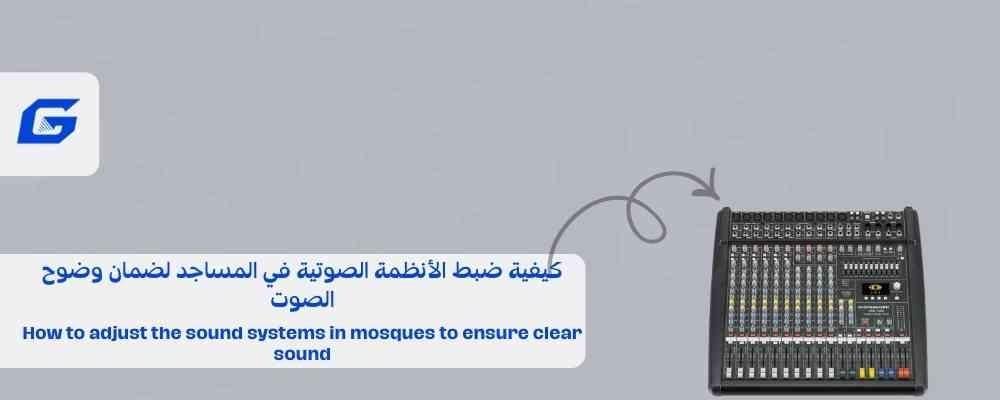Mosque sound systems provide a comfortable listening experience for worshippers and help deliver Quran recitations and sermons with clarity and clarity. However, some mosques may experience problems with sound distribution or clarity due to setup or installation errors. In this article, we will provide a practical guide on how to adjust mosque sound systems for the best audio performance.
1. Assessing the mosque’s acoustic needs
Key factors for evaluation:
- Mosque space: Larger mosques require more powerful and sophisticated sound systems.
- Interior design of the mosque: High ceilings and solid walls lead to sound interference and echo.
- Number of worshippers: Crowded places require better sound distribution.
Step one:
- Conduct audio analysis using specialized software to identify dead zones and areas of interference.
2. Choosing the right audio equipment
Speakers:
- Use directional speakers that reduce dispersion.
- Choose wall or ceiling speakers that provide even sound distribution.
Microphones:
- Use high quality dynamic microphones for the imam.
- Wireless microphones allow freedom of movement during speeches.
Audio processors:
- Digital signal processors (DSP) to adjust frequencies and reduce noise and echo.
- Sound reinforcement systems to deliver consistent performance in all conditions.
3. Distribute the speakers in a thoughtful way
Tips:
- Speaker Height: Install speakers at a height of 2.5 to 3 meters for best sound coverage.
- Sound Direction: Direct the speakers directly towards the seating areas to avoid sound dispersion.
- Even Distribution: Install speakers at equal distances to avoid sound interference.
Advanced techniques:
- Using Line Array technology for speakers in large mosques, it provides consistent audio coverage over long distances.
4. Adjust audio frequencies
The importance of adjusting frequencies:
- Improve the clarity of the Imam's voice and recitation of the Qur’an.
- Reduce noise from unwanted frequencies.
How to set:
- Use audio processors: to select appropriate frequencies and remove interference.
- Equalizer adjustment: Balance low, mid and high frequencies for a natural sound.
- Practical experience: Test the sound during an actual prayer to identify and adjust any issues.
5. Reduce echo and sound interference.
Common problems:
- Echoes from high ceilings and solid walls.
- Sound interference in open areas or crowded places.
Solutions:
- Installing sound insulation on walls and ceilings to absorb echo.
- Use thick carpets to reduce sound reflection from the floor.
- Adjust the angles of the speakers to reduce sound reflection.
6. Regular maintenance to ensure performance.
Maintenance steps:
- Clean the speakers and amplifiers to remove dust.
- Check connections and wires to ensure they are intact.
- Test the performance of your audio system regularly to ensure sound quality.
Importance of maintenance:
- Ensures continuous, uninterrupted performance.
- Extends the life of your audio equipment and reduces future costs.
7. Hire audio experts
Why do you need an expert?
- Providing customized recommendations based on the mosque's design and needs.
- Professional installation and adjustment of sound systems.
- Provide training on how to use the systems efficiently.
The role of experts in improving performance:
- Adjust audio processors based on the mosque's audio data.
- Providing innovative solutions for optimal sound distribution.
conclusion
Achieving optimal sound clarity in mosques depends on good planning, choosing the right equipment, and properly tuning the systems. Using modern equipment and digital audio processors, sound quality can be improved to provide a comfortable and distinctive listening experience for worshippers. Regular maintenance and the use of specialists ensures that excellent audio performance continues in the long term.
Post Cover Description
Cover showing the interior design of a modern mosque with an integrated audio system, including stylish wall speakers and acoustic treatments. The image shows an imam delivering a sermon, with emphasis on the clarity of the voice and the interaction of the worshippers, reflecting the quality of the audio system.

